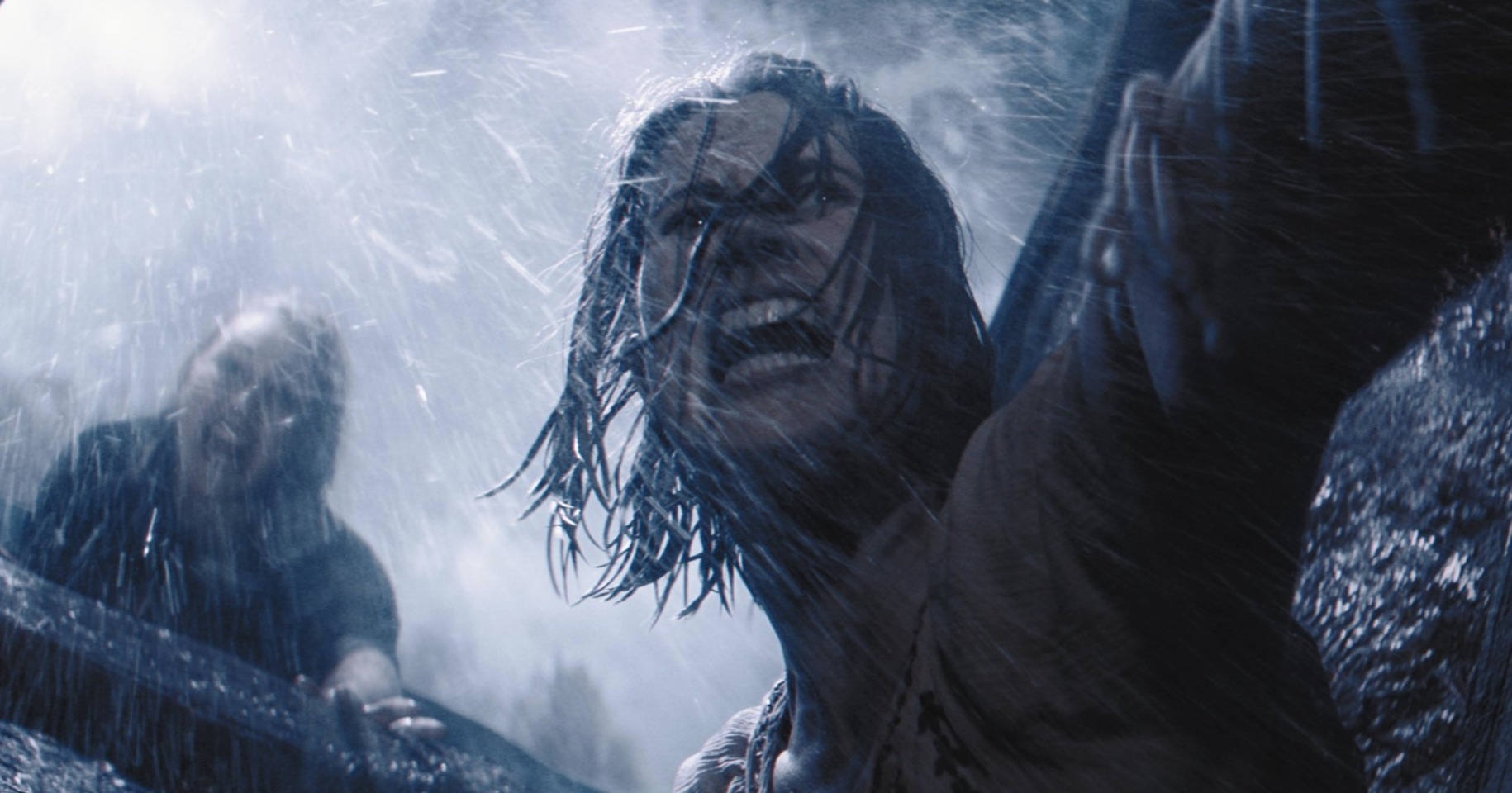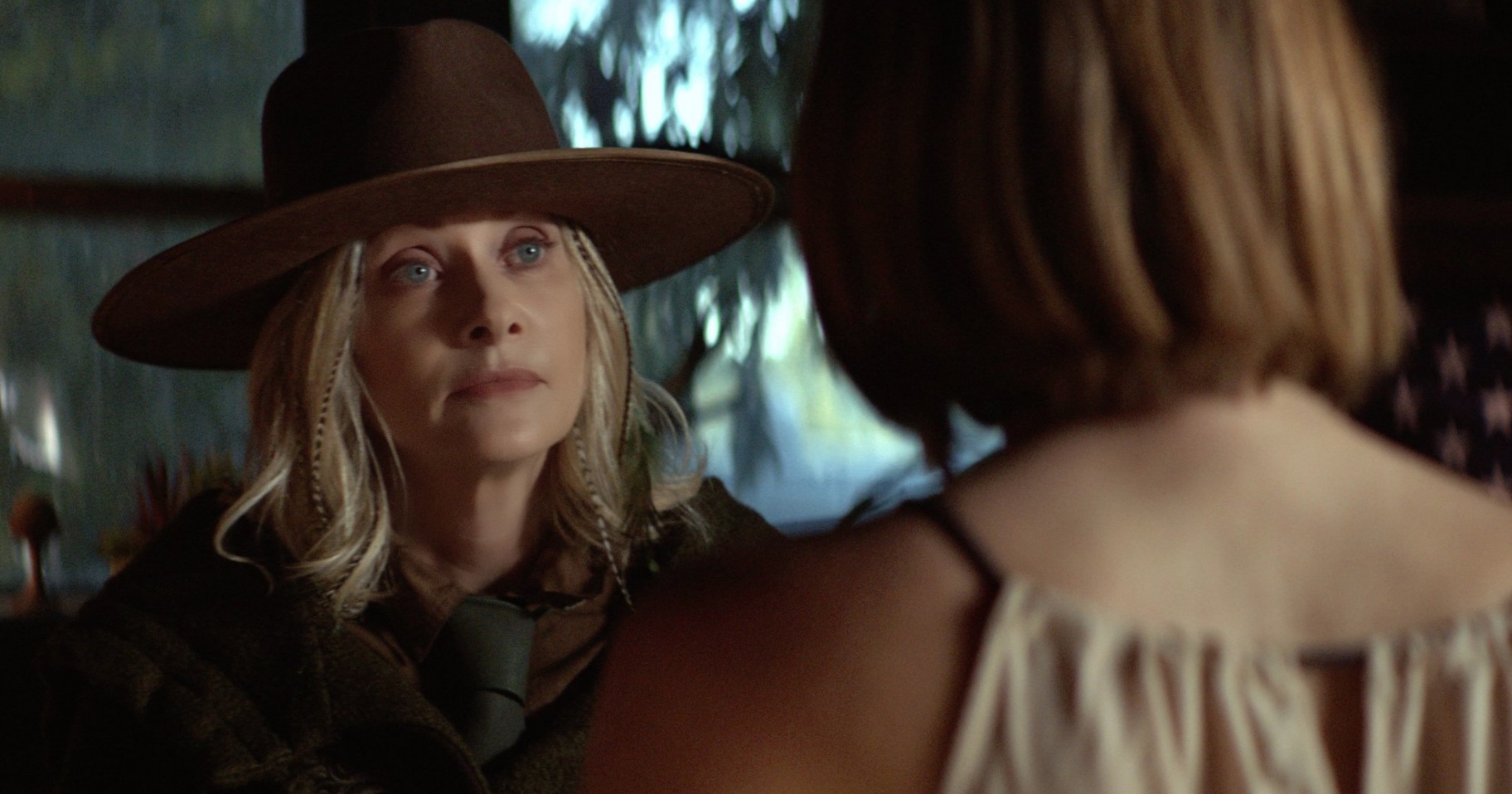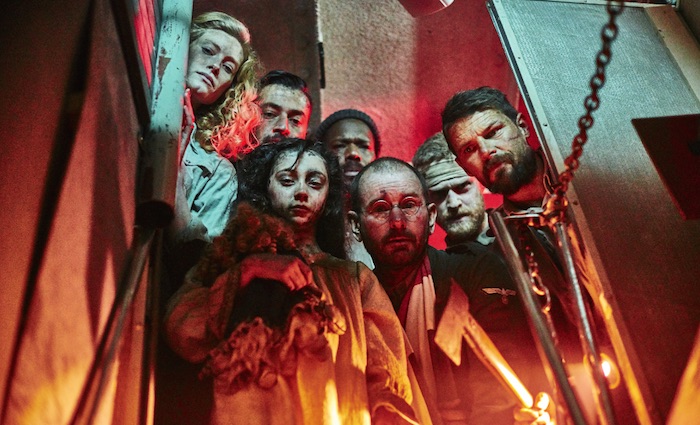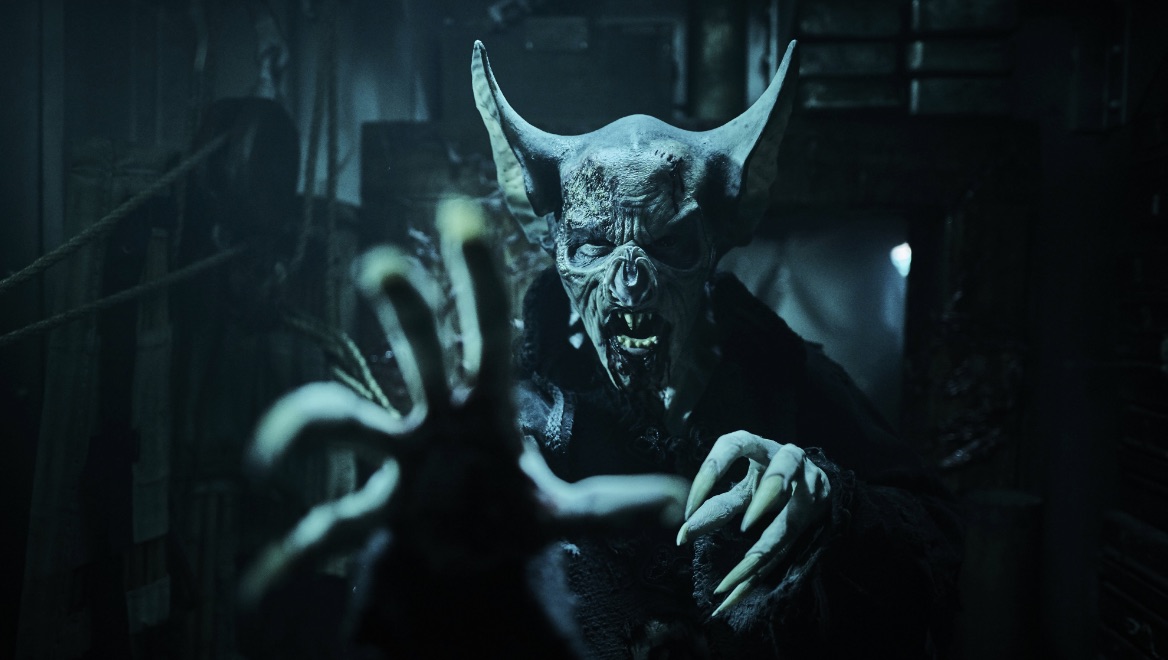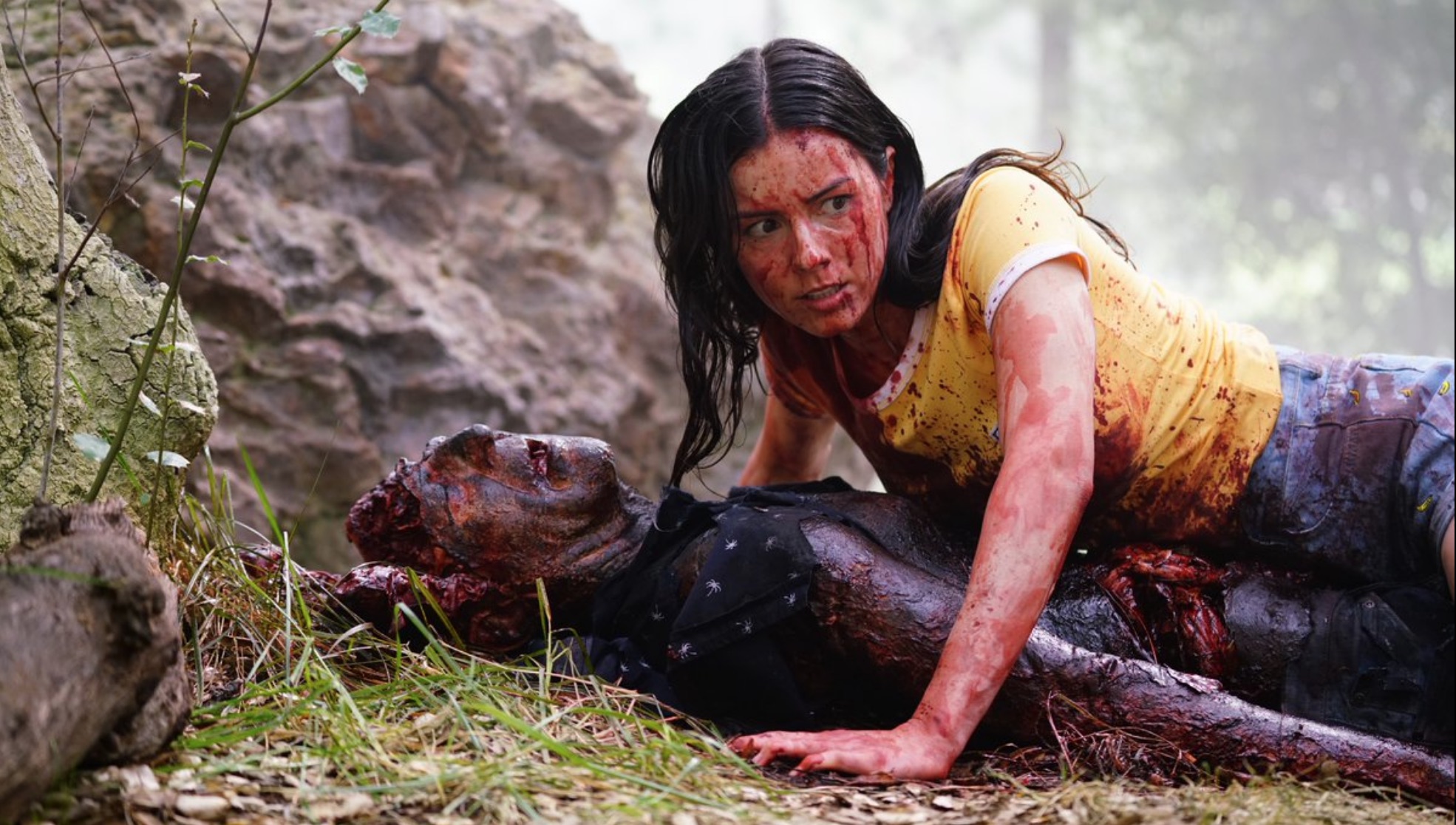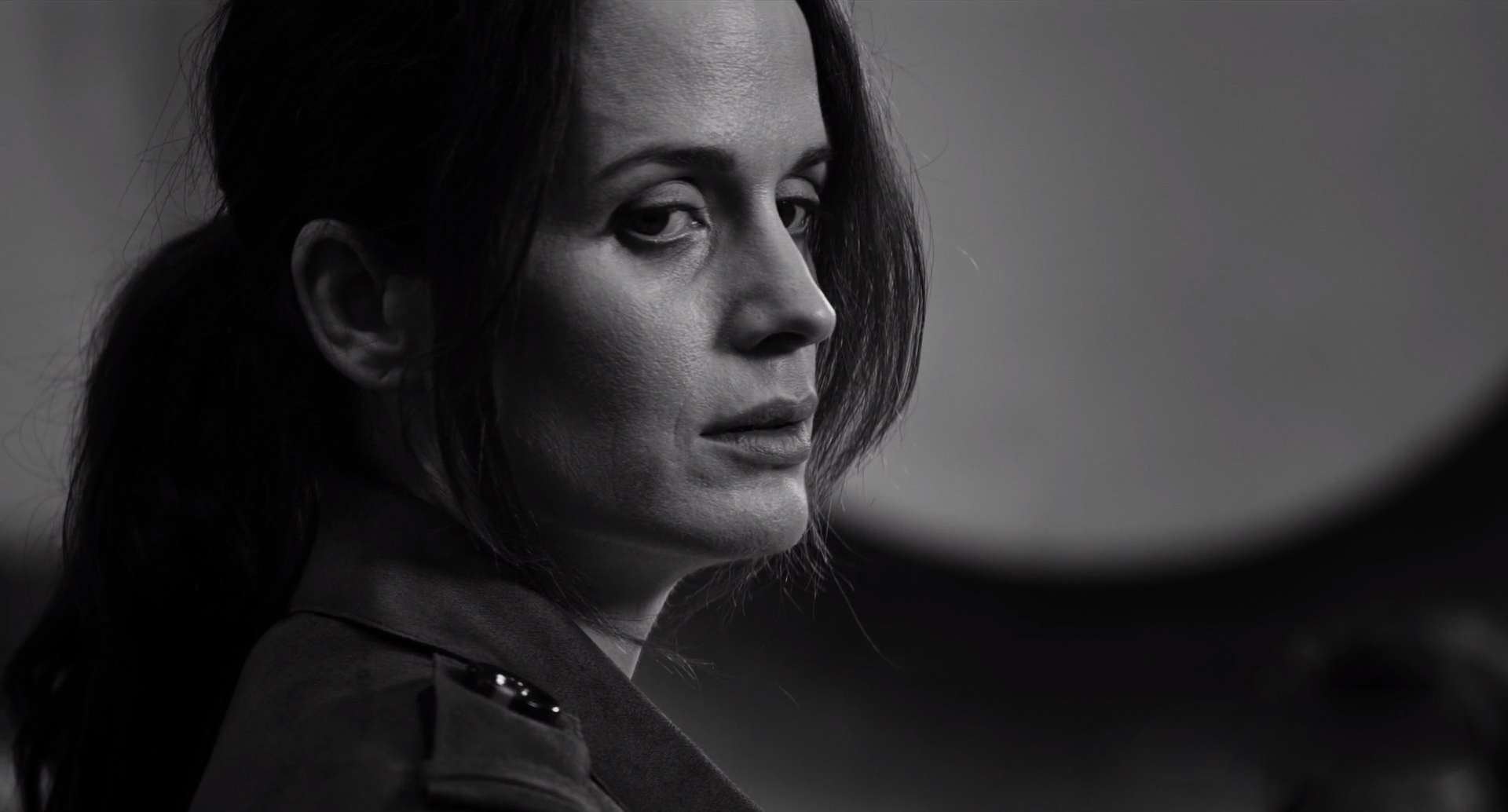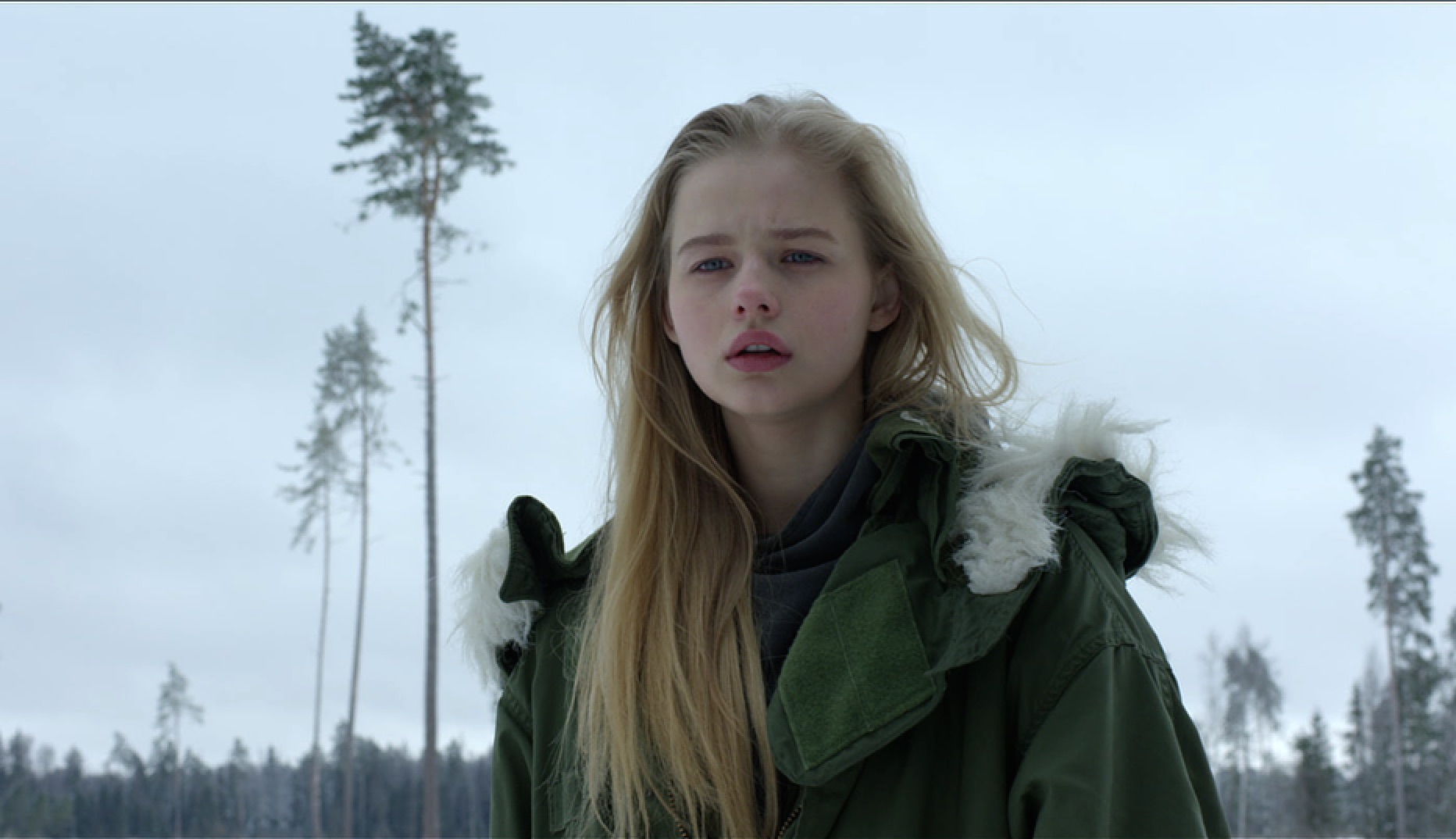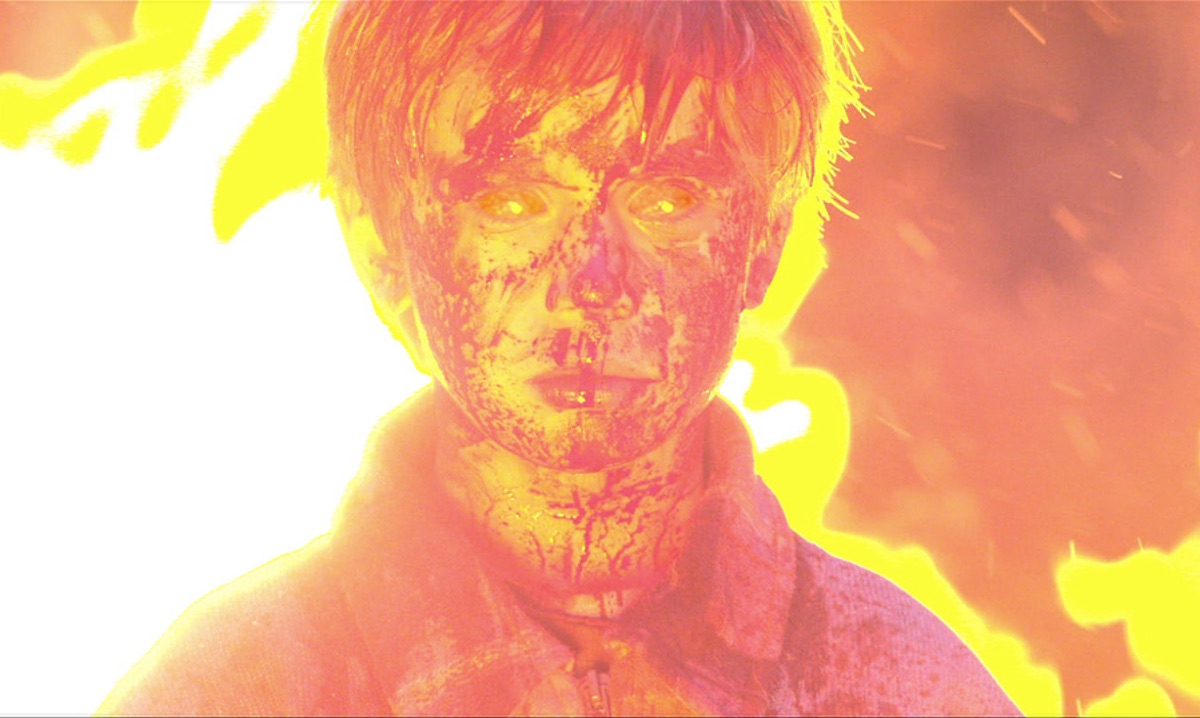GRIZZLY 2: REVENGE
 Sunday, August 16, 2020 at 4:25PM
Sunday, August 16, 2020 at 4:25PM
Stars: Steve Inwood, Deborah Raffin, John Rhys-Davies, Deborah Foreman, Louise Fletcher, Dick Anthony Williams, Charlie Sheen, Timothy Spall, Laura Dern and George Clooney.
Writers: Ross Massbaum, Joan McCall and David Sheldon.
Director: André Szöts
Reviewed online via Monmouth Film Festival, Sunday August 16.
Rating: ★ ½

...or ★ ★ ★ ★ ★, depending on what you’re expecting when you decide to take on André Szöts sole directorial effort, Grizzly 2: Revenge. Smashed together by determined producer Suzanne C. Nagy from footage shot in 1982, this belated sequel to the ridiculous (and ridiculously successful) 1976 Jaws rip-off Grizzly is barely a film; truncated scenes are poorly dubbed and edited erratically, to vainly progress a threadbare narrative that never makes sense. But in the annals of ‘All-time Great Bad Movies’, where earnest acting in the service of unspeakable dialogue is prized, Grizzly 2: Revenge gains immediate respect.
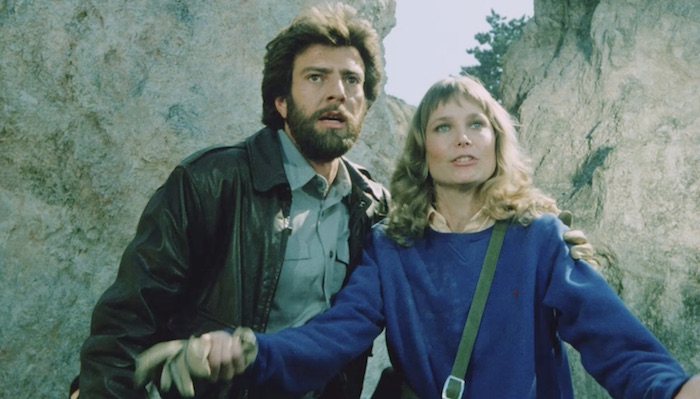
“These kids never stood a chance” - Owens; “Poor dumb kids.” - Sheriff Nick Hollister (pictured, above; Steve Inwood and Deborah Raffin)
Of course, the only reason to talk about this Frankenstein-of-a-movie is because it has existed in a rarified air of mystery amongst film nerds since production ground to a halt 46 years ago in Hungary. Nagy and the late Szöts (whose other notable credit was as co-writer of David Hamilton’s soft-focus arty 1979 skin-flick, Laura) had blown a huge chunk of their budget shooting a massive rock concert, the staging of which provides the background setting and an unnecessarily large percentage of screen time in the finished film. (Pictured, below; Laura Dern, as Tina, and George Clooney, as Ron)
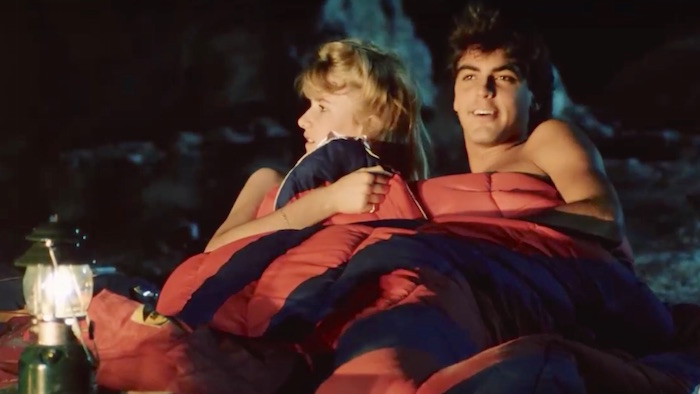
“You got the Devil Bear!” - Bouchard, Grizzly tracker
No money was left to fix the troublesome animatronic bear nor, ultimately, complete the film; in one of the many wild stories associated with the shoot, it is alleged producer Joseph Proctor absconded with $2million from the budget. It would not be until 2007 that rumours began circulating that a 96 minute ‘workprint’ existed (the version reviewed here peaked at 78). In 2011, journalist Scott Weinberg wrote a piece for Screen Anarchy in which he recounts his experience watching what he calls one of his “Genre Geek Holy Grails”. Nagy decided 2018 was the right time to remaster the surviving footage and hack together the man-vs-nature sequel absolutely nobody wanted.
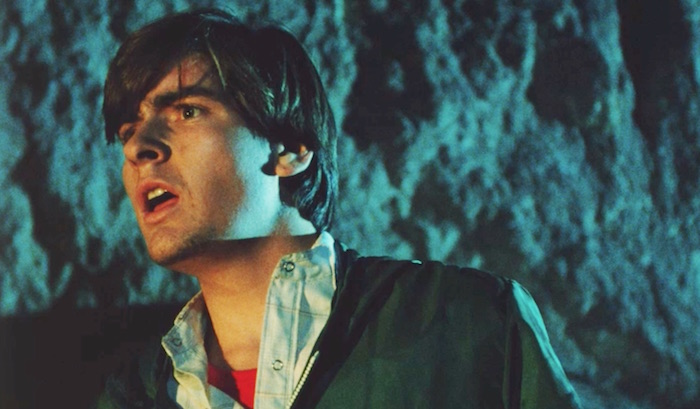
“Getting sour by the hour. Excuse me…” - Toto Coelo, all-girl band (Lyrics)
Grizzly 2: Revenge is set in motion when a group of hunters shoot two bear cubs and wound the matriarch; all this footage is video stock, not shot in ‘83 but sourced to give the narrative a kickstart. Jump to three young twenty-somethings, played by hungry-for-work young actors George Clooney, Laura Dern and Charlie Sheen (pictured, above), hiking the woods on their way to the outdoor concert, only to be offed by said grizzly (or a handheld cameraman, if the sequence is to be taken literally, as we never see the bear). One of the few joys on offer in Grizzly 2 is future-star spotting; sharp eyes will spot Game of Thrones’ Ian McNiece and (are you sitting down?) British acting great Timothy Spall.
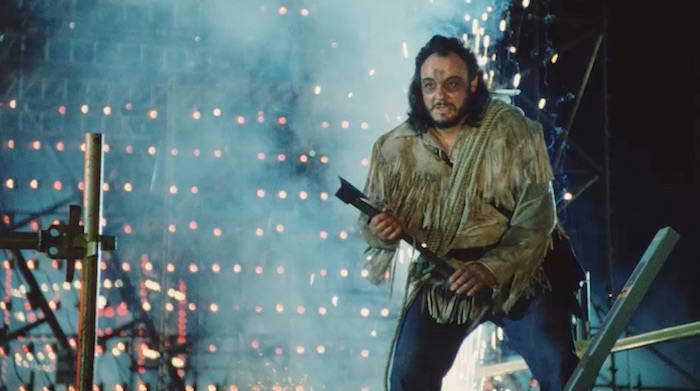
“Maggie Sue!” - Drunk men around a campfire, while pinching each other’s bottoms (Lyrics).
The film settles into its predisposed ‘Jaws rip-off’ mode from then on, with Louise Fletcher’s hard-nosed corporate type mimicking Murray Hamilton’s ruthless mayor; instead of keeping the beaches open for summer, she demands the rock concert go ahead, despite there being a teen-eating beast on the loose. Out-of-towner sheriff Nick Hollister (Steve Inwood, acting from his moussed hair down,in the Roy Scheider part) and Bear Management expert Samantha Owens (Deborah Raffin, going full Dreyfuss in her defense of the bear) are forced to call on legendary bear-tracker and Quint archetype, Bouchard (the always-game John Rhys-Davies; pictured, above) whose idiosyncrasies, and there are many, include speaking of himself in the third-person.
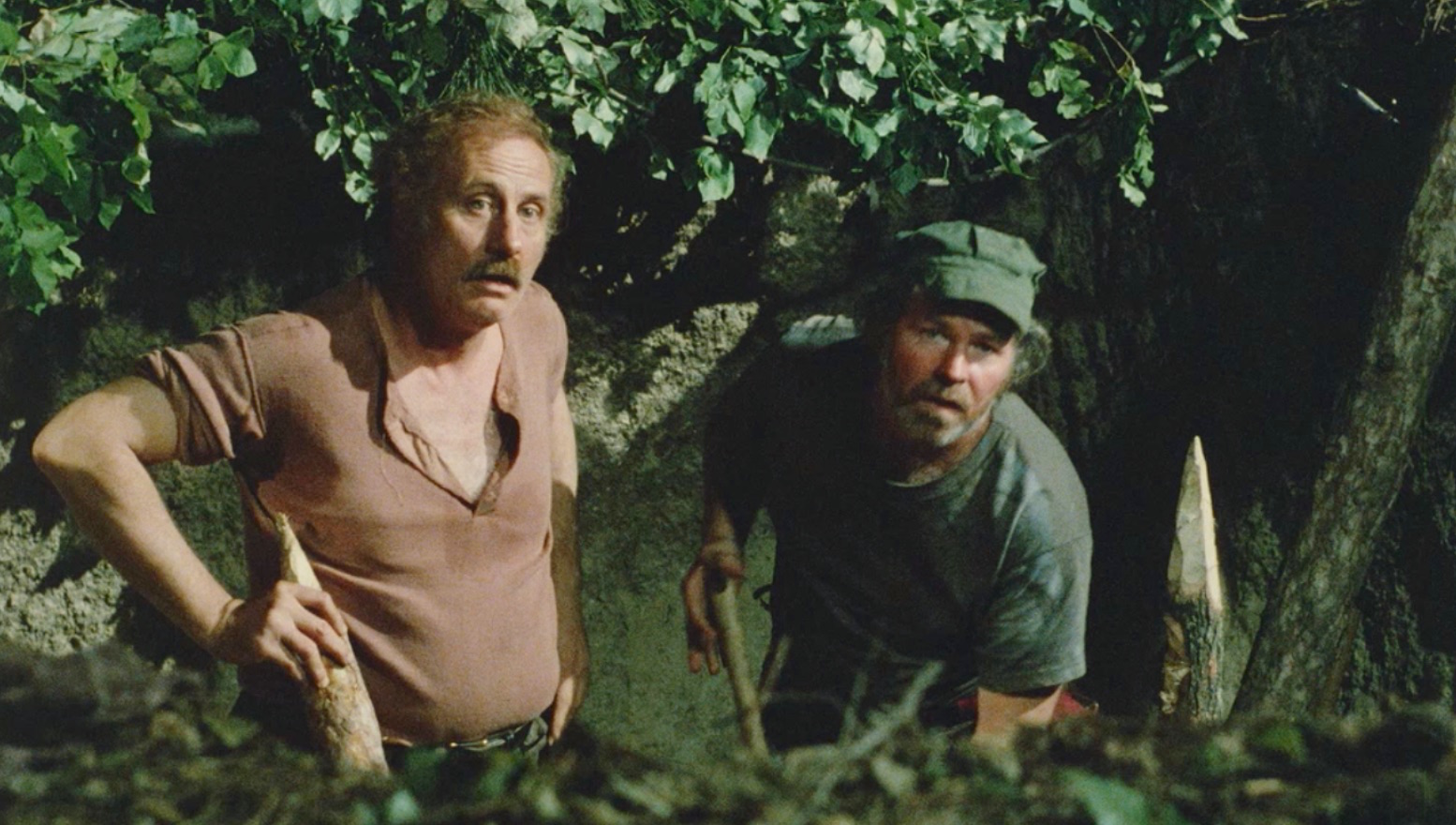
“You haven’t seen what Bouchard has seen!” - Bouchard.
As they fight the occasionally-glimpsed killer bear day and night (often within the same scene), the film cuts back and forth to the concert, which is sometimes in full flight and sometimes still being readied (let’s assume the first department to go when cash got tight was continuity). Future ‘Valley Girl’ Deborah Foreman (pictured, below), playing the daughter of Sheriff Hollister, gets a job at the event and falls for a George Michael-type synth-pop star, complete with ultra-tight short-shorts in which he both performs and jogs (watched, but not attacked, by the bear, which seems odd in hindsight).
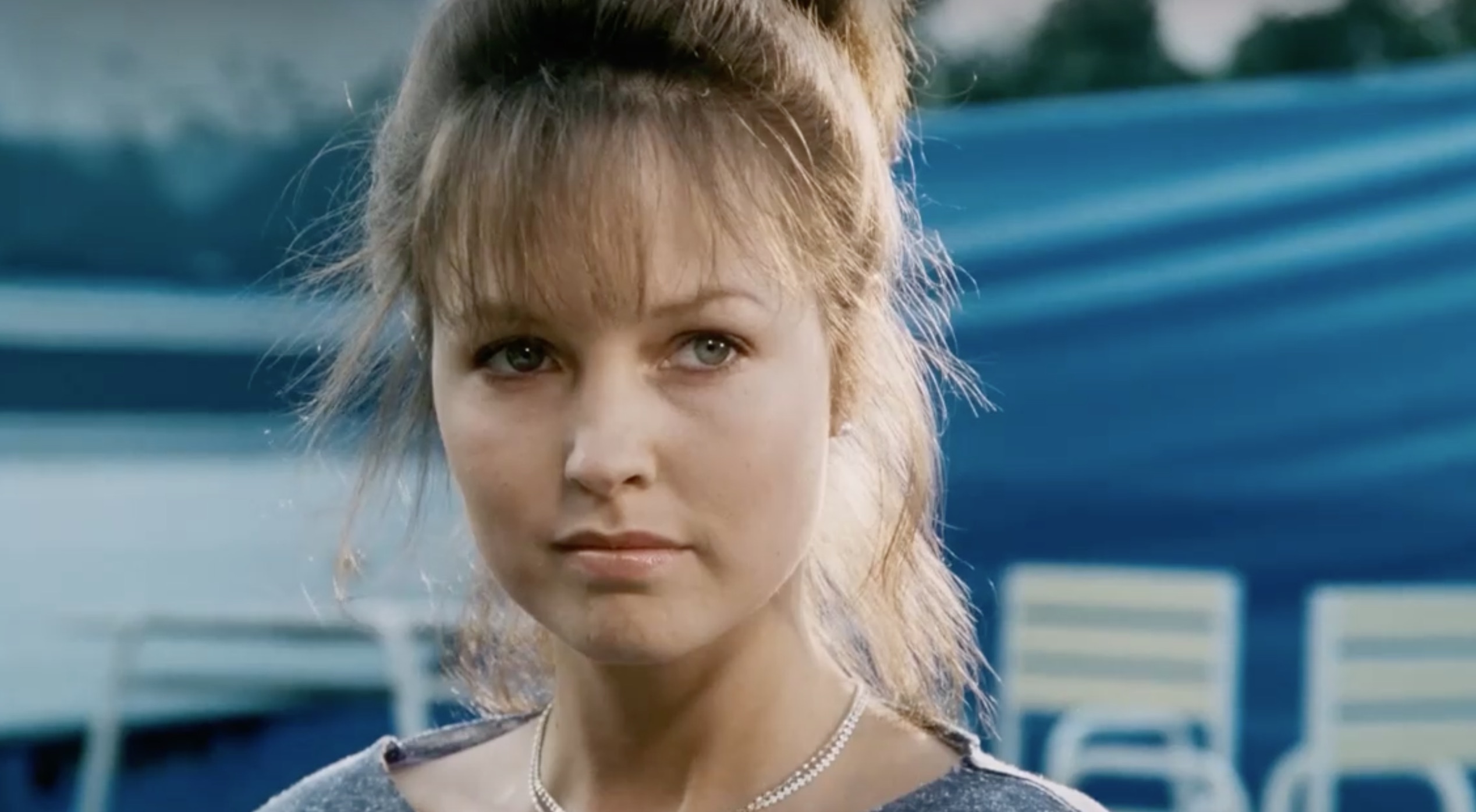
“This grizzly is huge, obviously powerful and probably enraged.”
- Samantha Owens, Bear Management Expert.
In true schlock-movie style, there are miraculously bad decisions made along the way that translate to priceless cinema. Personal favourite amongst them is actor Jack Starret (who played mean-spirited Deputy Galt opposite Sylvester Stallone in First Blood before he made this) calculates the financial benefits of double-crossing his mates while holding a rabbit, its expression at the absurdity of what’s happening the best animal acting in the film. That honour should have gone to the titular Ursus horribilis, but she gets no respect from the surviving footage. The denouement (more precisely recalling Jaws 2 than 1) is the final slap in the face for the anti-heroine, who makes no real impact on the concertgoers (imagine the carnage had she rampaged?!) and is reduced to the butt of a stupid final-frame joke.
Bound for cultdom, Grizzly 2: Revenge (also called Grizzly II: The Predator and Grizzly II: The Concert over the years) is the kind of bad film celebrated just for its very being, and one can’t begrudge the old girl that honour.
 Animal,
Animal,  Film Festival,
Film Festival,  Horror Film,
Horror Film,  retro
retro 



